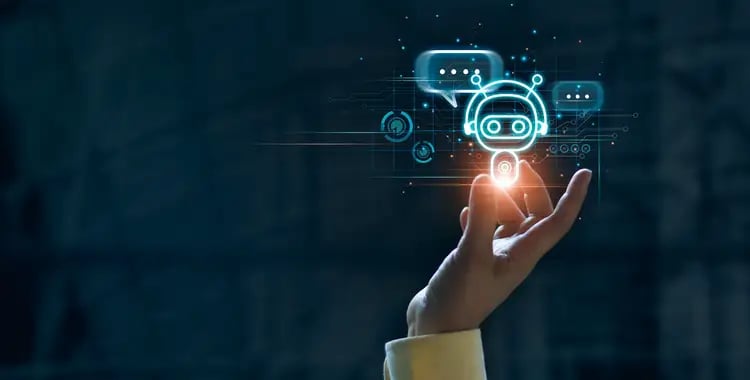
The tech world is abuzz with the release of a new AI chatbot, ChatGPT. The new technology has been developed by US-based research company, OpenAI. Since its release in late November, OpenAI’s leader, Sam Altman, has announced that over one million people are using the new tool. ChatGPT is capable not only of the AI chatbot functions we are accustomed to but also of producing written text ranging across everything from essays to computer programs. OpenAI explains that they have trained the technology to interact with users in a conversationalist way that follows a question-and-answer dialogue, and also, “answering follow-up questions, challenging incorrect premises, rejecting inappropriate queries and even admitting its mistakes.”
Users can ask a wide range of questions and the chatbot will use its memory of previous questions/answers along with the general thread of your internet “dialogue” in order to generate responses, which are selected using vast amounts of information available on the internet. The tool is trained to identify patterns in high volumes of online text and assisted by human support to create better, more natural-sounding answers.
Tech investors have already poured in billions of dollars in funding, which, on top of the high volume of users, indicates that the AI tool has been generally well-received by the public. While still in its infancy, ChatGPT has been picked up by several large companies that see the potential the tool has to offer. For example, digital contract management start-up, Ironclad, is looking into how the tool could be used to summarize amendments to legal documents. What’s more, the bot can be used in areas of customer service/support, personal assistance, education, and training.
Of course, AI chatbot technology is not new, so why is there so much hype around this iteration in particular? This is because ChatGPT generates real-time responses that are based on the user’s input, allowing for the more “naturalistic,” conversational tone that is making this technology such a talking point. While impressive, OpenAI does warn that the tool can generate occasionally “incorrect or misleading information,” despite the articulate and authoritative tone it may use, meaning it must still be checked by the human eye.
RAPYD.AI’s managing partner, Tobias Zwingmann, explained that he has been using the technology to generate lecture notes for online courses he teaches, doing so by asking the chatbot to explain a theory and write a text about it. This meant Zwingmann did not have to write the notes himself, only polish and edit the document a little once complete. Impressively, this process took 30 minutes, instead of the full day that it would have taken to do himself.
An interesting aspect of the tool is its ability to generate programming code. It does this by emulating what humans have done, and of course, still needs to be scrutinized by the human eye to ensure accuracy, but it can work. In addition, with ChatGPT’s writing abilities there is scope for companies to utilize the technology for automating writing processes, such as social media posting.
With this in mind, and as much as the buzz around the chatbot is positive, there are some concerns. Namely, there is speculation about whether technology that can write code will replace programming jobs. There is a question about the tool’s language writing capabilities, and whether or not this poses a threat to writers in media and journalism. Many people hold that we will learn to incorporate these tools into our current work strategies as an aid, not a replacement.
Another more general question is whether or not ChatGPT technology will be a threat to Google. The reason this could be the case is due to how ChatGPT synthesizes information for the user, as opposed to a Google search which generates a list of links one has to open and read through. It may be the case that ChatGPT could provide better, more convenient answers than Google does. Given the positive reception ChatGPT has experienced, it could indicate that a segment of the population prefers question-answer information over more traditional search engine methods.
Chatbots have been a part of customer service strategies for years, with chatbot windows popping up when opening most business websites. However, most chatbot technology has been quite rudimentary until now, and a recent Ujet study found that 72% of 1,700 people surveyed indicated they found chatbots to be unhelpful. With new AI technology like ChatGPT emerging, this may begin to change. Highly-trained chatbot technology can streamline customer service channels and, used in tandem with person-to-person interaction, can impact overall customer care satisfaction. ChatGPT, while still very new, shows potential on the AI communications front, and overall, this new technology appears to be heralding a new phase in AI communication and “natural” language processing.
%20(1).png?width=2701&height=607&name=BRC_NEXA_LOGO_WHITE%20(2)%20(1).png)
